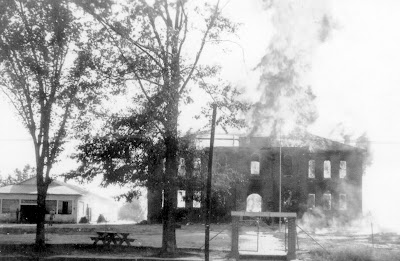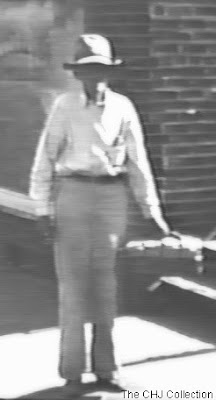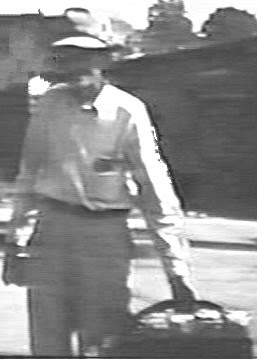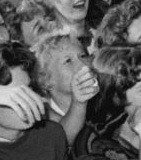

* Born: 7 Feb 1902, Waveland, Yell County, AR.
* Marriage: Eva Elizabeth Sheppard on 9 May 1921 in Havana, Yell County, AR.
* Died: 7 Mar 1975, Baldwyn, Lee Co, MS. at age 73
* Buried: Masonic Cemetery, Baldwyn, Lee Co, MS.
By Eva (Sheppard) Weldon
Information as of Nov. 1988: Other names for Odell were "J.S." and "Slim". Slim was a farmer till 1930. Started driving a truck for a lumber company, then drove a grade "A" milk truck until 1947. He took the job of police chief of Baldwyn. In 1958 Slim was hired as City Street Commissioner.Ola Mae (Babe Sheppard) Madden and Hollis Weaver, Dave Weaver's son, related this story to me:
In 1929 Odell decided farming in Arkansas was declining so it was time to move to the Delta of Mississippi. Ben Sheppard, Odell's father-in-law, always carried a knife about six inches long and when he stopped work he pulled his knife out and whittled or sharpened the knife on his trouser leg. Ben decided to sell his farm and accompany Odell and Eva to MS. Odell's family, Ben Sheppard's family, Roy Madden and his wife Babe, and Dave Weaver's family all loaded their belongings on an open bed truck and drove to the Mississippi river crossing at Greenville, MS. They crossed and went to Coahoma County and signed on to make a crop for a landowner there. Ben had money and paid for all his supplies but Odell, Roy, and Dave got all their supplies from the Company Store on credit.
After the harvest in 1930 the land and store owner revealed to all the people they still owed the store money for supplies including Ben Sheppard. All the families got together and discussed a plan of action. Odell, Roy, and Dave went north to Baldwyn, Prentiss County, and talked to the owner of William Davis Lumber Co. and started to work. On Friday after work Odell, Roy, and Dave took a company truck, went to Coahoma County and loaded everyone's belongings and then they all went to talk to the landowner. When they told him they were leaving he said he would have them arrested and jailed. Odell said they were leaving and he could send to Prentiss County and have them arrested.
Ben told the landowner he owed him two hundred dollars for his crop, as he had no credit account. When the landowner refused to listen Ben pulled his knife and laid it against the landowner's throat and said "I'll bleed you all over the floor unless you pay me." The landowner paid, they all left and no one ever showed up in Baldwyn to arrest them.
Slim taught himself to read but he never mastered writing. He could sign his name and print very well. Slim used the initials J. S. on his driver's license, bank account, and other records. He was told in 1932 when he applied for a driver's license he needed an initial so he used those initials.
Odell was best known as Slim.
In 1966 Slim had an accident, a motor grader ran over him. He was operated on and he lost one lung, part of his stomach, part of his intestine, part of his colon, and three of his disks were fused.
______________________________________
Source: http://freepages.genealogy.rootsweb.ancestry.com/
Well, you learn something new every day... a little "sleuthing" on the internet provided this article - CH

































